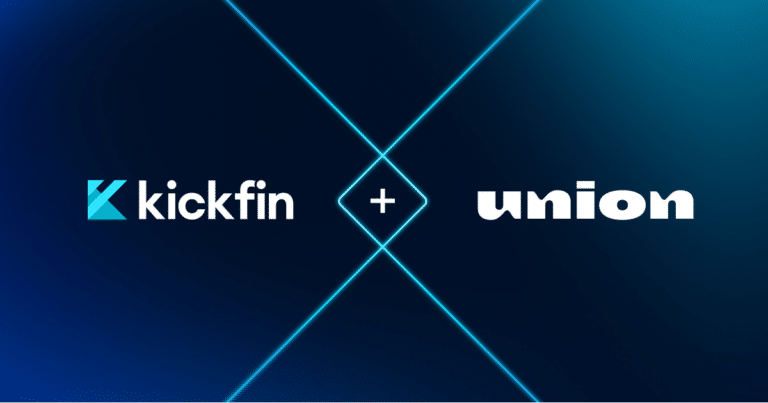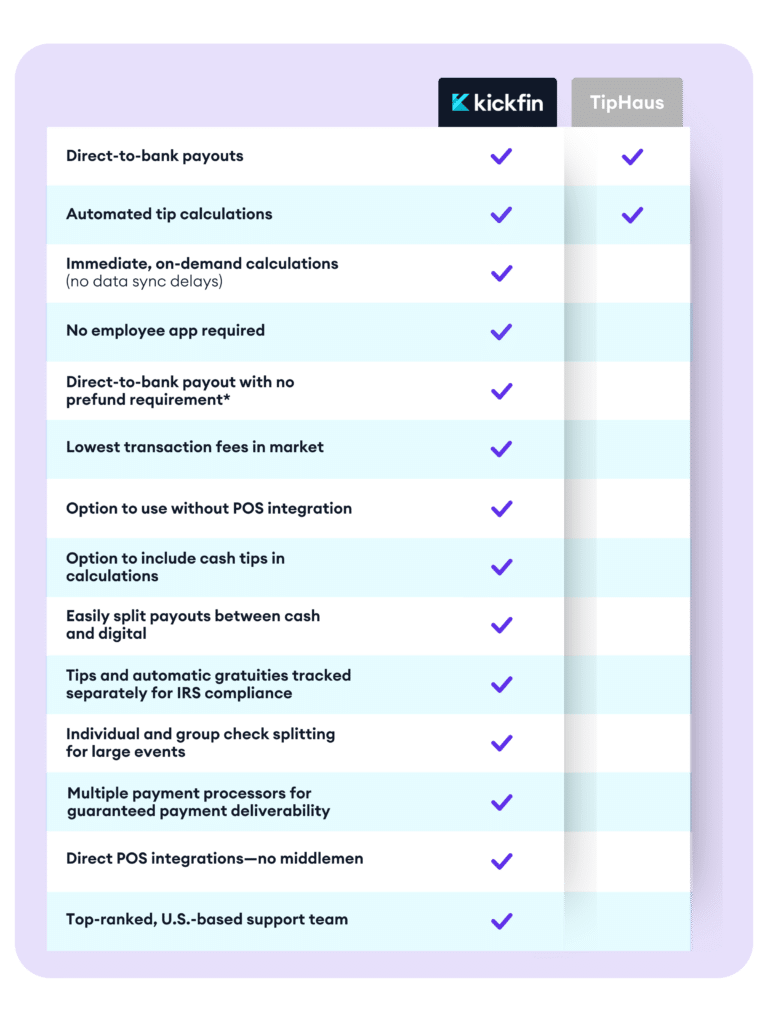Running a successful restaurant requires juggling staff, food quality, customer service, finances…the list goes on (and on). Whether you’re a seasoned restaurateur or a management newbie, implementing effective restaurant management strategies is crucial to the success of your restaurant, team and bottom line.
Chances are, you’re already doing a lot of these things — but it’s never a bad idea to revisit your restaurant management approach and make sure you’re covering all your bases.
Here are 10 restaurant management tips to help you navigate the restaurant industry, boost efficiency, and take your business to the next level.
1. Invest in restaurant technology
Your tech stack impacts every aspect of your approach to restaurant management.
The standard restaurant tech stack has changed in recent years — and it continues to evolve as new innovations roll out. Here are some essential tech tools every restaurant owner should consider leveraging:
- Point of sale (POS) system: We know, we know…a POS is table stakes. But there are a ton of options out there — and if you haven’t done so lately, it could be worth revisiting your current POS to make sure it’s checking all your boxes. An advanced POS system goes beyond processing transactions. It can track sales, organize menu items, manage staff, and offer detailed reports to aid in business planning.
- Inventory management software: Our motto: Automate what you can — and that includes inventory management. Accurate inventory tracking reduces waste and helps boost profits. Inventory management software helps you keep track of what’s in stock in real-time, predicting what you need to reorder and when.
- Payroll software: A good payroll system simplifies the complicated task of managing staff wages, benefits, and tax deductions. It automates calculations, reducing the chance of errors and ensuring your staff is paid correctly and on time.
- Tip management software: If you’re still paying out credit card tips in cash, it’s time to hit the “easy” button. Tip pooling and distribution software can be run as a standalone system or integrated with your POS to calculate and distribute (cashless!) tips instantly to your employees’ bank of choice. That means no more bank runs, a lot more visibility into tip payments for easier reporting — oh, and happier employees. (Sign up for a demo to hear more from one of our experts about what we do and how it can help you.)
- Reservation and online ordering system: In today’s digital age, an online reservation and ordering system is non-negotiable. It allows customers to make reservations or order food online, improving their dining experience and boosting your bottom line.
- Customer relationship management (CRM) system: Sometimes, leaning into automation and digitization can also mean less personalization. But for most restaurants, it’s still important to maintain that human touch and build meaningful customer relationships. A CRM system can help you do just that. It stores customer data, tracks their preferences, and ultimately allows you to better understand their preferences — creating a more customized experience and ultimately customer loyalty.
2. Formalize your staff training program
Investing in regular staff training is another key restaurant management strategy that gives your people what they need to succeed.
A well-trained staff will not only possess the necessary skills to perform their roles efficiently, but they also reflect your restaurant’s standards and values. Whether it’s the kitchen staff preparing meals or the front-desk staff interacting with the customers, every individual contributes to the overall customer experience.
Staff should be trained on how to handle various situations, from managing customer complaints to upselling menu items. Training also ensures that hygiene and safety standards are consistently met.
3. Consider the employee experience
The hospitality industry is known for high employee turnover. Part of that is due to the nature of the job — many employees join the workforce during transitional seasons of life (think: college kids); there’s seasonality to consider, etc.
But turnover is also due to the fact that hospitality is a grind — and if you’re not meeting you’re staff’s expectations when it comes to things like culture, flexibility, and even benefits, then they’ll look elsewhere. (And they’ll likely find something, given the tough labor market.)
In addition to simply keeping your restaurant running, having a high staff retention rate makes every aspect of your operations easier. When your staff stays with you for a long period, they become more familiar with your standards, operations, and expectations, and are better able to deliver consistent, high-quality service.
Frequent turnover, on the other hand, can lead to inconsistencies in service delivery and creates more headaches when it comes to scheduling and management. Plus, the cost of recruiting, interviewing, and training new hires adds up over time – especially if new staff only stays for a few months. Turnover also ups your admin burden when it comes to tasks like payroll and user management for your tech systems.
A few retention-oriented tactics you can incorporate into your restaurant management plan:
- Competitive wages
- Employee benefits (which may be more financially feasible than you think!)
- Career growth opportunities, with a clear path to achieve them
- A fun, respectful workplace culture
One key factor contributing to employee satisfaction and retention in the restaurant industry is the fair and prompt disbursement of pay and tips. That’s where Kickfin can help. Kickfin is a digital tip distribution platform that enables restaurant owners to send tips directly to their employees’ bank accounts, instantly after their shift.
By eliminating the need for cash handling, Kickfin not only increases efficiency but also ensures transparency and fairness in tip distribution. Employees can expect to receive their tips promptly, fostering a sense of financial security. Moreover, the immediacy and reliability of Kickfin’s system can boost employees’ morale, leading to increased job satisfaction.
4. Focus on Customer Experience
As a restaurant manager, prioritizing service is crucial to ensuring your customers feel welcome and receive a high-quality experience. That includes:
- Greeting guests: Invest time in training your staff on how to interact with customers — which starts the moment someone walks in the door. A genuine, prompt greeting sets the tone for the overall dining experience.
- Communication: Employees should be able to communicate clearly, listen to customer needs, handle complaints with professionalism, and provide quick solutions. Not only does it demonstrate your restaurant’s commitment to satisfaction; it’s also a great way to help your employees boost their tips.
- Efficiency: Quality service means efficient service. Make sure orders are taken accurately and delivered to tables promptly. Regular staff meetings can be useful to highlight areas of improvement for both front-of-house and back-of-house — and it’s an opportunity to recognize efforts of staff who consistently go above and beyond.
- Feedback: Feedback, whether positive or negative, is a powerful tool for improvement. Consider using comment cards, online surveys, or simply asking customers about their experience. This not only shows your customers that their opinion matters, but it offers insights into how your service and food are perceived and where there might be room for improvement.
5. Be aware of online reviews
In today’s digital world, online reviews significantly influence a restaurant’s reputation and customer decisions. Continuously monitor and respond to reviews on platforms like Yelp, Google, TripAdvisor, and social media.
Negative reviews, in particular, should be addressed promptly and professionally. Avoid getting into online battles: Simply apologize for any shortcomings, acknowledge the customer’s dissatisfaction, and suggest a resolution. This approach shows potential customers that you’re dedicated to providing exceptional service and willing to make things right when they don’t go as planned.
Positive reviews deserve your attention as well. Thank each customer for their feedback and express your delight in serving them. It will encourage repeat business and inspire others to visit your restaurant. You might even consider incentivizing those who have had positive experiences to share them more widely.
6. Always be marketing
Continuous marketing is essential to keep your restaurant at the forefront of customers’ minds. Actively promoting your restaurant on various platforms, like social media, flyers, and local newspapers helps you reach a broad audience and increase visibility. Social media platforms, in particular, offer cost-effective and highly engaging ways to connect with customers, showcase your food, and build a community.
Regular updates about new menu items, special discounts, and events can entice customers and increase sales. It’s also beneficial to leverage local publications, as they can help you attract a local crowd and build a loyal customer base. Distributing flyers and circulars in nearby areas can be effective, too, especially for promoting new offers or events. Keep in mind that marketing is a continuous process – not a one-time, check-the-box restaurant management task.
7. Experiment and innovate
The best restaurant management plans leverage outside-the-box thinking. Don’t be afraid to experiment with different aspects of your business — for example:
- A dynamic menu can keep your patrons excited and curious about your offerings. Trying out new recipes or introducing seasonal dishes can provide a unique dining experience, attracting new customers and encouraging regulars to keep coming back.
- Creative pricing strategies can drive profitability. Offering discounts during slow hours, or bundling certain items together at a lower price, can boost sales and enhance customer satisfaction.
- If you have the space, hosting private events can also increase sales while making your restaurant feel like an entertainment destination — and can be an opportunity for new guests to visit your business.
- Live music nights, themed dinners, or cookery workshops can generate buzz around your establishment and foster a sense of community amongst your customers.
- Rethinking the decor — whether it’s a true overhaul, a spruce-up, or simply decorating for seasonal trends — can make your space feel fresh and inviting, which in turn elevates the dining experience.
8. Be aware of your cash flow and accounting
Keeping a close eye on cash flow and accounting is essential for maintaining sustainable restaurant operations. Inconsistent or inadequate cash flow can lead to various challenges, potentially affecting your ability to pay employees, suppliers, and other expenses.
Remember, as a manager, your continuous focus on cash flow and accounting is critical to the financial health and success of your restaurant. Using technology like bookkeeping software can significantly aid in this endeavor, allowing you to focus more on delivering exceptional food and service to your customers.
This is another area where digital tipping can make restaurant management more efficient. With more credit card tips than ever before, many restaurant managers know the pain of not having enough cash in the safe to pay out tips at the end of a shift. Kickfin makes it easy to distribute tips instantly (no cash required) by instantly transferring funds to your employees’ bank accounts. Not only do real-time, digital payouts make for happier customers — it also makes reconciliation and reporting a breeze, and gives everyone greater visibility into cash flow.
9. Connect with a mentor or other restaurant owners
Establishing connections with a mentor or other restaurant owners can provide invaluable insights and guidance for your business. A mentor with industry experience can offer advice based on their own triumphs and mistakes, helping you to navigate the challenges of the restaurant business and stay up-to-date with the latest trends and best practices. They can provide a fresh perspective when you’re faced with difficult decisions, and their wisdom can prevent you from making common mistakes.
Similarly, joining a community of restaurant owners or managers can offer a platform for mutual support and information exchange. Communities often host forums or meetings where members discuss industry changes, innovations, and common hurdles, providing practical solutions based on their experiences. Amidst the ups and downs of the restaurant business, these connections can serve as a lifeline, providing emotional support and reassurance.
Having a mentor and being part of a community enables you to continuously learn, grow, and adapt, enhancing your ability to manage your restaurant effectively and successfully.
10. Be the manager you’d like to work for
Being a successful restaurant manager takes more than just business acumen; it requires embodying the qualities of a leader. As a manager, you need to be an excellent multitasker, capable of overseeing several operations simultaneously.
You also need to be transparent. Being open and honest with your staff fosters a sense of trust, respect, and loyalty. Share relevant information, provide clear instructions, and involve employees in decision-making processes where appropriate.
If you own or manage a restaurant, you set the tone for the entire establishment. A positive attitude is contagious, inspiring employees to put their best foot forward and delivering an exceptional dining experience to customers. Through your enthusiasm, commitment, and resilience, you can create a motivating work environment that translates into the overall success of your business.






